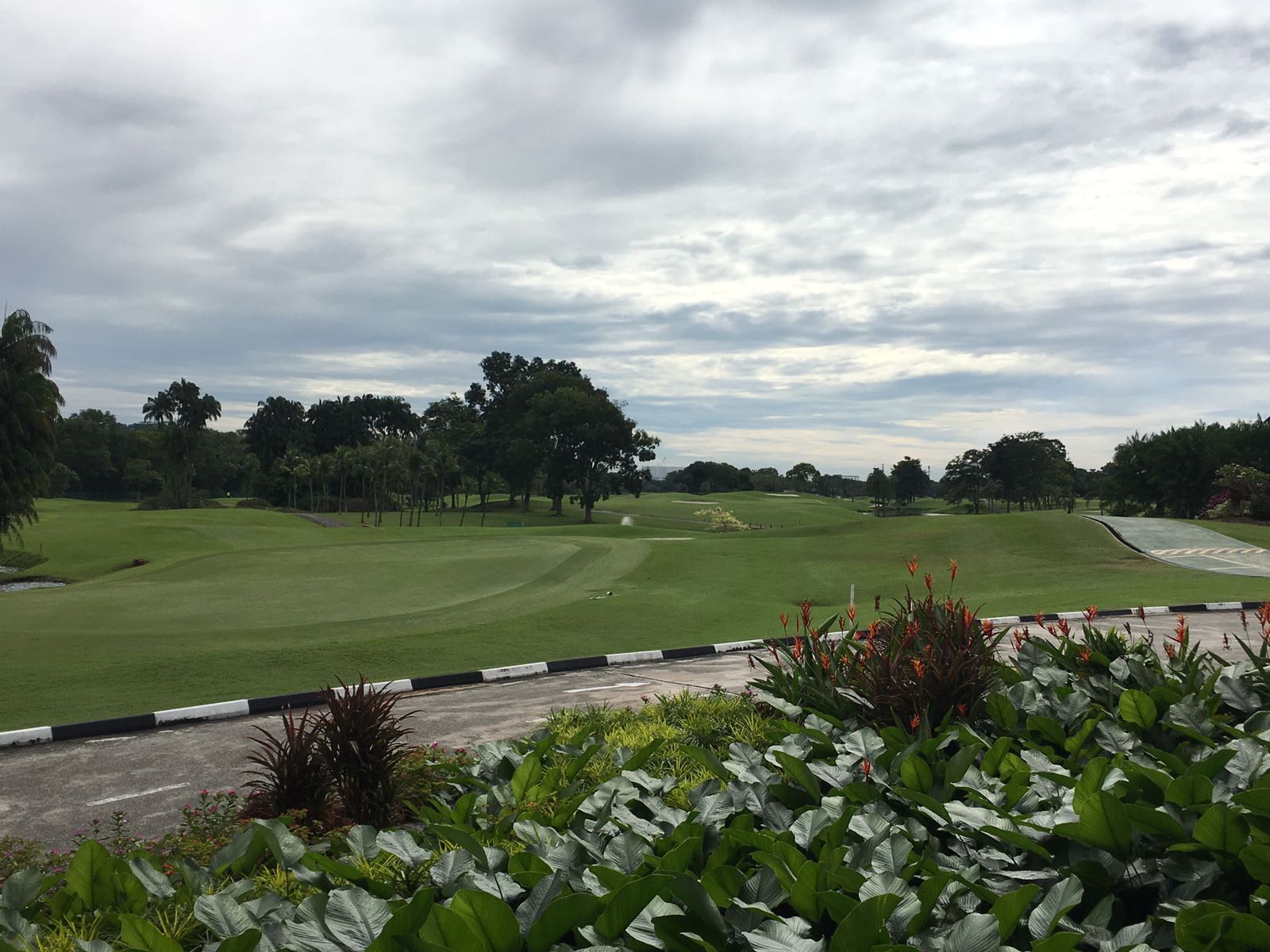SINGAPORE: The 143-hectare Raffles Country Club site in Tuas will be acquired by authorities to make way for the Kuala Lumpur-Singapore High-Speed Rail project.
The club announced the move on its website on Wednesday (Jan 4). The announcement included a letter from the Singapore Land Authority informing the club of the acquisition.
According to the announcement, the land is also needed for the Cross Island Line’s western depot and other transport-related uses.
“We understand that many of you may have queries regarding the future of RCC,” the club said in the announcement. “We would like to assure you that the club has been contacted by the relevant Government agencies and we will provide members with a more detailed update in due course.”
The club will be required to vacate its premises by Jul 31, 2018, according to the letter.


BIGGEST ACQUISITION DONE IN RECENT YEARS
On Wednesday (Jan 4), the Land Transport Authority (LTA) and SLA said the Raffles Country Club site is the “optimal site” in terms of location, size and orientation.
Leaders of Singapore and Malaysia had signed a bilateral agreement for the high-speed rail last month, where it was agreed that the HSR will cross the Straits of Johor via a bridge with a height clearance of 25 metres above the water level.
LTA and SLA explained that as the bridge is high, it has to be continued before it can be brought down to land and into the tunnel. “So there are not a lot of options in terms of where we can site it without having to make a lot of land acquisitions”, they said.
They said the Raffles Country Club site is the most suitable location to run the HSR tracks immediately after the bridge crossing. It will then enter an underground tunnel to the HSR terminus in Jurong East.
Space is also needed for HSR crossover tracks and a siding facility that will temporarily house a train near the border for safety or operational reasons, if necessary.
The site is also needed to provide train parking and maintenance facilities for the Cross Island Line’s Western Depot, LTA and SLA added, as well as other transport-related needs which may include train testing facilities. Further details of the projects will be given after detailed feasibility and engineering studies, they said.
By size, the 143-hectare site is the biggest land acquisition in recent years. The club is the second country club – after Jurong Country Club – to be acquired by authorities for the HSR project. It closed for good on Dec 31 last year, ahead of its lease expiry in 2035. The 67-hectare site it was on will be occupied by the HSR terminus, as well as mixed-use developments and community facilities.
“This is a big acquisition and we would like to reiterate that the government does not take acquisition lightly,” said SLA’s Chief Executive Tan Boon Khai. “We will consider all options including the technical and suitability details before making the acquisition.”
He added that under the Land Acquisition Act, the club will be compensated full market value, and SLA will work closely with the club’s management and assist the club throughout the acquisition process. Jurong Country Club was awarded S$89.8 million by the Collector of Land Revenue – an amount about half of what the club asked for in its claim for compensation.

ALL CLUB MEMBERS INFORMED OF ACQUISITION
When contacted by Channel NewsAsia, the club said it was given the acquisition notice just after 10am on Wednesday. It has “several direct channels” of reaching out to members, and that all have been informed of the acquisition.
The club, which was founded in 1988, has two 18-hole golf courses, and its lease was due to expire in 2028. A check on club membership broker websites showed RCC memberships going for between S$32,500 to S$34,000. It has about 2,650 golfing members.
The high-speed rail, which is slated for completion in 2026, is expected to cut travel time between Singapore and Kuala Lumpur to about 90 minutes. The line will run for 350km, with 335km in Malaysia and 15km in Singapore.
There will be eight stations in total, with the two terminal stations at Jurong East in Singapore and Bandar Malaysia in Kuala Lumpur.
ACQUISITION THE MOST LOGICAL DECISION: ANALYSTS
Analysts told Channel NewsAsia that acquiring the site – which runs parallel to the Ayer Rajah Expressway (AYE) – was the most logical decision for the high-speed rail project.
Transport analyst Dr Walter Theseira of SIM University said that, unlike mass transit lines which can curve, the high-speed rail line cannot afford to do so in order to maintain its speed.
“If you look at the geography of the area, one very likely alignment is … straight alongside the existing AYE for much of the length of the AYE in the Tuas area,” said Dr Theseira. “That would be a very straight alignment, and if you build it, in fact, along the grounds of the Raffles Country Club, then you don’t have to take over, for example, industrial land to do that.”
He added that the authorities may also have chosen the site as the most cost-effective way to guide trains underground from above ground.
“It’s going to be a lot cheaper to do that, if for example you were to take over a stretch of land which currently doesn’t have development on it, and basically dig the tunnel there and cover the tunnel afterwards,” he said.
“If you were to build the tunnel, however, underneath existing structures, it’s generally a lot more costly and complicated and I think we want to minimise that kind of cost as far as possible. That would be unavoidable once the HSR gets into the Jurong area, but I think there’s a chance to lower the cost by taking over the Raffles Country Club.”
Neither would it be feasible to run the line below an operational golf course, said Chong Kee Sen, immediate past president of the Institution of Engineers, Singapore.
He explained that a high-speed train entering Singapore would require a long strip of land for it to maintain its speed as it moves underground.
“The transition has to be smooth, the gradient has to be more gentle, so it basically affects the surface of the RCC for a certain stretch before the train really goes into the tunnel,” said Mr Chong.
He added that the land that might be too shallow in parts to support golf games above it, and that the strip could stretch across much of the site’s courses.
Additional reporting by Loke Kok Fai.
